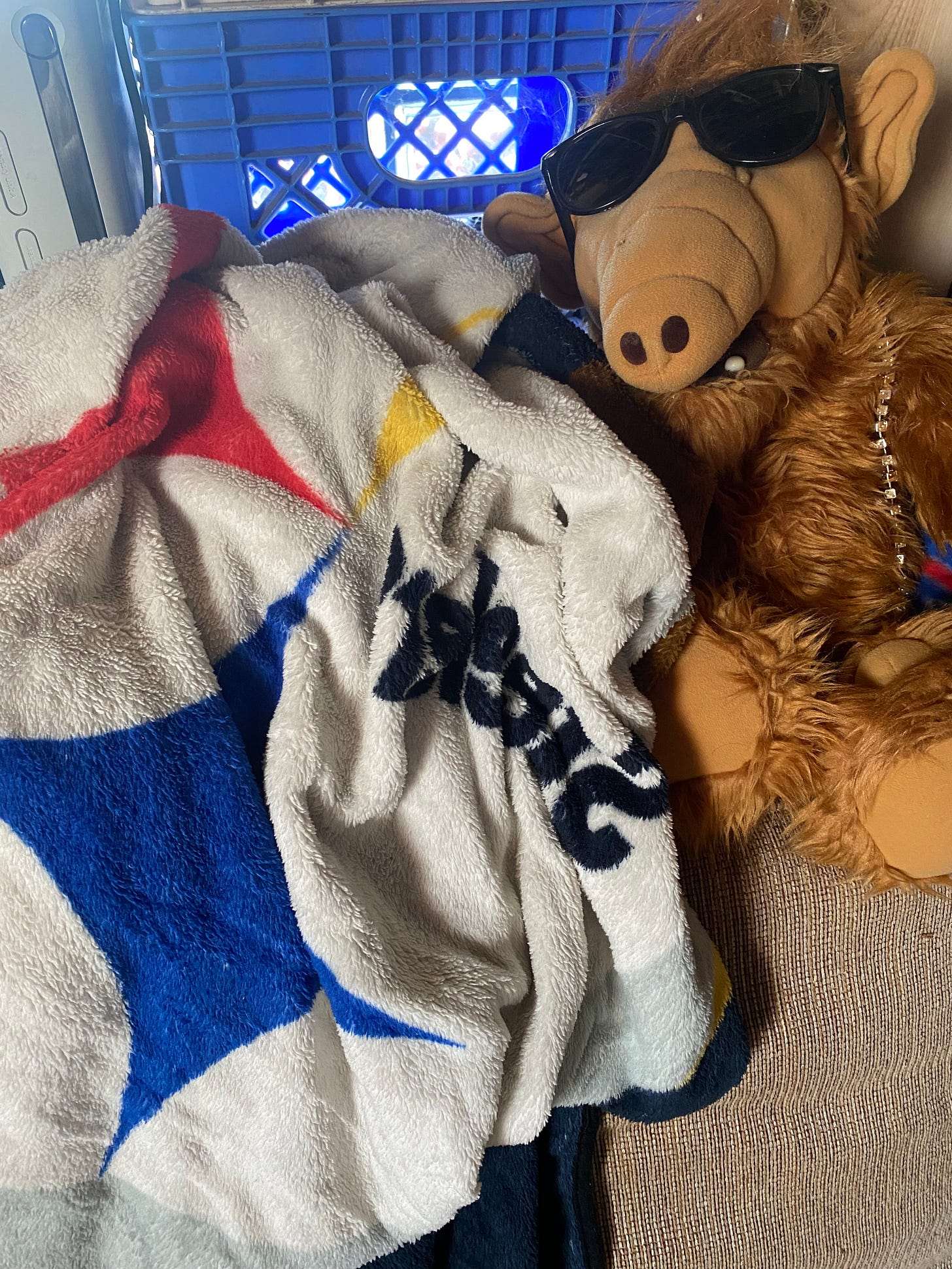When I was a teenager I was forever in a state of being triggered. My eyes were dilated as part of my body’s attempt to help me see the threat. People were always convinced I was on acid even though I swore (truthfully) that I had never done any drugs. It wasn’t until I started reading The Courage to Heal* that I started understanding what triggers were and began to start to reclaim my life.
Trigger identification is a big part of trauma healing. Triggers can feel a lot of different ways — like a spike in the heart rate, quick temperature fluctuation, sudden loss of language, sudden feeling of collapse, feeling distant from yourself, sudden anger or fear, a barrage of negative thoughts about yourself, plus a million other things. (of course, just regular hard things and negative emotions can feel these ways too, but I trust you to feel into the difference).
What I always am looking to do, as a therapist and as a person, is to create more space between the trigger and the action, so instead of feeling the spike in heart rate (or whatever it is for you) and thinking “I’m in danger,” you think “danger…no, I’m triggered,” and that leads to more possibility of action.
Becoming an outside observer is part of a path to healing. I don’ t mean outside in a dissociated way, but rather being able to sort of take a breath and observe what is happening. For example, I used to get really triggered by the fabric fleece. In my distant past, a person I hadn’t yet started dating talked about masterbating into someone elses fleece hat. This was the first red flag of what was to become a 2 year sexually, emotionally, and financially abusive relationship.
I had done a lot of productive and healing therapy focused on that relationship, but I mostly just avoided fleece because it was easy to avoid. I’m a natural fibers kind of girl, so it didn’t really come up. But then my beloved person happened to bring home a fleece blanket. My first instinct was to be like “that’s triggering to me, you can’t have it.” But I didn’t want to do that. This seemed like a trigger I could neutralize. It was surprisingly hard though. We would be sitting on the couch and they’d be wrapped up in the blanket. We’d be having a nice time, watching t.v. or reading on opposite sides of the couch, and over time I’d find myself getting really irritated, and since irritation is one of my trigger symptoms, my brain would start looking for a threat, and since my person was the only other person in the room, I would think the threat was them and I’d start to try to find things that were going wrong with our relationship.
The subconscious and the nervous system, left to their own devices, work like that, evil little destroyers trying their best to be protectors but getting it all wrong. This is where the development of becoming an outside observer comes in.
I would catch myself and take a breath and look at what was happening — my emotions, the benign scene, the caring person next to me, the blanket. And I’d realize “Oh, it’s the blanket. I’m triggered.”
It wasn’t until I had a month alone in the house where I could just sit every day with the blanket near me and do other things and constantly mindfully take breaths and regulate my nervous system, that the blanket became neutralized and no longer brings up any emotions or physiological reactions.
Avoidance is a coping strategy, and it can be helpful to identify what things you might accept as things you want to avoid, and what ones you want to work on. Like I have accepted that porn, anal sex, and most horror movies are triggers I don’t really have interest in working on and so will continue to avoid. But there are other triggers I’m continually working on: mostly interpersonal, hard to define moments where I feel suddenly unseen, unsupported, and a flood of flashback memories hit me. I’ve committed to taking to take a breath in these moments and staying in the present moment instead of diving into the flashbacks or running away or lashing out. It’s hard.







The Courage to Heal was an important book for me on my healing journey as a child abuse survivor. Thank you for sharing this piece Cindy.